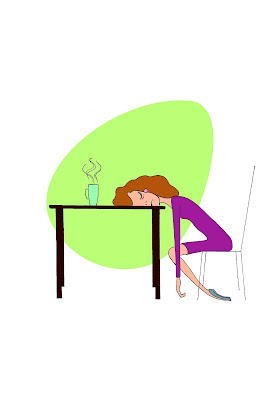A Brief Introduction to Ayurveda
Ayurveda is a traditional health science originated from India. The term Ayurveda came from the combination of two Sanskrit words, Ayu (Life) and Veda (Knowledge/Science). It provides all the measures to protect our healthy life. There are eight branches in Ayurveda. They are,
- Kaya chikitsa (General medicine)
- Bala chikitsa (Paediatrics)
- Graha chikitsa (Psychiatry)
- Urdhvanga chikitsa (Ear, Nose, Throat, Eyes and Head)
- Shalya chikitsa (Surgery)
- Damshtra chikitsa (Toxicology)
- Jara chikitsa (Geriatrics)
- Vrushya chikitsa (Aphrodisiac therapy)
According to Ayurveda the human body is composed of 5 subtle units called Panchamahabhuta. These Pachamahbhuta are also present on earth. They are,
Prithvi (earth), Ap (water), Tej (fire), Vayu (air), and Akasa (ether)
The concept of Tridosha is indispensable when you start learning about Ayurveda.
Human body structure and functions are the result of Panchamahabhuta. Physical and mental character of an individual is determined by the specific combination of these subtle units which make up Dosha. According to Ayurvedic texts, a person’s nature (Prakruthi) is determined based on the combination of different types and levels of Dosha.
What is Dosha?
Dosha refers to the energies that pervade everywhere including body and mind, each with different functions.
There are three types of Dosha (Tridosha) -
- Vata
- Pitha
- Kapha
What is Vata?
Vata is the combination of air and space. It is responsible for all types of movements or activities.
Qualities
Dryness, lightness, coldness, roughness, subtle, movement
Normal functions
- Movements of blood through blood vessels.
- Breathing movements.
- Locomotor movements (legs and hands movement).
- Regulates all activities of mind.
- Controls speech.
- Initiation of natural urges like coughing, sneezing, urination, defecation, vomiting, yawning etc.
- Proper functioning of sense organs.
Effects of increased Vata
- Emaciation
- Increased preference for anything warm.
- Tremors
- Bloating, fullness or distention of abdomen.
- Constipation
- Loss of strength.
- Loss of sleep.
- Loss of sensory functions.
- Delusion, dizziness or giddiness.
- Peevishness.
What is Pitha?
Pitha is the combination of fire and water. Pitha is the source for all transformative processes.
Qualities
Oily, strong, hotness, lightness, sliminess, movement, liquidity, pungent smell.
Normal functions
- Causes digestion and metabolism.
- Maintain body temperature.
- Helps in vision.
- Causes hunger, thirst and appetite.
- Maintain skin complexion, intelligence, courage, valor and softness of the body.
Effects of increased Pitha
- Yellow discoloration of feces, urine and eyes.
- Excessive hunger and thirst.
- Burning sensation.
- Very little sleep.
What is Kapha?
Kapha is the combination of earth and water. It gives a structural appearance to every object.
Qualities
Oily, unctuous, cold, heavy, mild, smooth, slimy, stable.
Normal function
- It gives stability, lubrication and compactness of joints.
- It is the cause for mental capacity to withstand or withhold emotions, strains etc.
Effects of increased Kapha
- Weakens digestive fire.
- Excess salivation.
- Laziness
- Feeling of heaviness.
- White discoloration.
- Feeling of coldness.
- Feeling of looseness of body parts.
- Dyspnea or Asthma.
- Cough or cold.
- Excessive sleep.
Prevention and therapeutic ways of health management depend on Tridosha. Dhathu (tissues), Mala (waste products), and Agni (energy/digestive fire) are the other important factors to consider.
An equilibrium of Dosha, Dhathu, Mala and Agni together with a pleasant state of sensory organs are considered to be Svastha (healthy stage). Their imbalance leads to Athuravastha (Diseased stage). Hence the aim of Ayurveda is,
An equilibrium of Dosha, Dhathu, Mala and Agni together with a pleasant state of sensory organs are considered to be Svastha (healthy stage). Their imbalance leads to Athuravastha (Diseased stage). Hence the aim of Ayurveda is,
"Svasthasya svaasthya rakshanam athurasya vikaraprasamanam"
which is to maintain a healthy life and prevent diseases.
Ayurvedic treatments are mainly classified into three categories of therapy,
- Shodhana
- Shamana
- Bhrimhana
In some conditions like less dosha vitiation, old age etc., Shamana (Palliative therapy) is recommended. Internal medications, external application of oil, powder etc. come under Shamana therapy. In the case of more aggravated dosha, Shodhana is advisable. Forceful elimination of vitiated doshas or toxic products out of the body is Shodhana (Purification therapy). Panchakarama is one of the main shodhana treatments in Ayurveda. Brimhana is nourishing therapy.
Ayurveda is not only limited in medications and therapies. It touches every part of our life including diet, exercise, sleep, habits etc. Following good habits and regiments will always make a person happy and healthy.





Very informative..!
ReplyDelete